Home » Articles posted by Jaidis Nollan (Page 6)
Author Archives: Jaidis Nollan
The Art of Japandi
Sometimes two great styles are better than one. That’s what happens when the raw functionality of Scandinavian design fuses with Japanese nature-suffused simplicity, and it’s a look that fits American kitchens like a glove. Designers say it creates wonderful zen, with some famous Scandi and Japanese variants adding warmth and interest to sleek minimalism.
At first glance it may seem an unlikely design union, since Japan and Scandinavia are on opposite sides of the globe. But, in actuality, their design sensibilities are remarkably similar, and Denmark, especially, has had a close trade relationship with Japan for hundreds of years. The Danish design museum in Copenhagen even devotes exhibit space to Japanese design.
Thomas Lykke of OEO Studio in Copenhagen, Tokyo and Kyoto applauds the design fusion of the two countries, but dislikes that it’s dubbed a trend.
“Trends tend to pass by,” he says. “The Japanese-Danish connection goes far beyond that. I call it shared DNA. Meticulous craftsmanship and attention to details, simplicity and timelessness are deep-rooted in both countries’ culture. We want design that will be relevant 50 years from now. And we are, in our hectic lives, looking for meaningful ways to live, through craftsmanship and rituals, whether that’s a tea ceremony in Kyoto or a coffee break in Copenhagen. Also, neither country has vast natural resources, so we respect what we have and work with it.”
Although Japandi at its roots is the epitome of minimalism, two special concepts set it apart. One is “hygge,” a Danish word now known by designers everywhere, meaning cozy comfort. In Scandinavia this is achieved with lots of textures and touches of color. The other is wabi sabi, the Japanese concept of finding beauty in something imperfect. This could be a well-loved heirloom, perhaps a piece of furniture or a well-used utensil. Although Scandinavians don’t talk about wabi sabi, they, too, love to let the patina of something old and well-loved add charm to a space.
Cabinetry in a Lykke kitchen is always the main event. In one kitchen, for example, cabinets aspire to be more a piece of furniture that fits naturally into living environments rather than a stand-alone kitchen. It combines simplicity and refined, contrasting materials. Lykke calls it “a quality culinary space rather than merely a show kitchen.” Another kitchen features modular cabinets, a popular concept in European homes. The modules are sectioned using slender metal dividers and sit on metal plinths creating a light, floating look.
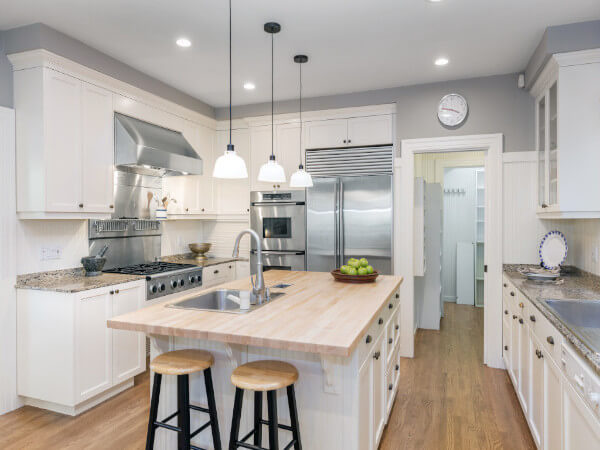
A tiny concrete cave of a New York City apartment is turned into a work of art by architect Andrew Mikhael, who used walnut not just for cabinetry but also for structural elements. The concrete ceiling couldn’t accommodate recessed lighting, so he installed LED tape lights in channels and then surrounded them with walnut slats. The angled walnut wall was designed to reference a drawn-back curtain revealing the sculptural space.
Modern Nostalgia
When a 30-something guy bought a tiny, concrete cell of an apartment on New York City’s Upper East Side, he turned to architect Andrew Mikhael for help. The client showed Mikhael photos from his grandmother’s home, a place that inspired wonderful memories. When Mikhael saw the grandmother’s Danish serve ware and the simple, elegant mid-century furnishings, he knew exactly what to do.
“Since he loves to have people over and cook and bake for them, I knew the kitchen should be an unexpected centerpiece,” reports Mikhael, “a functional work of art. We removed the wall between the galley kitchen and the living room to combine the spaces. We also extended the kitchen into the entryway space, thus expanding the kitchen from 56 square feet to 87 square feet. Next, we installed an angled walnut wall that recalls a partially pulled-back curtain, dramatically revealing the sculptural kitchen.”
Mikhael used walnut throughout the kitchen as an homage to the client’s grandmother. He even wrapped a structural column that couldn’t be moved in walnut. The remarkable workmanship morphs and blends, wraps and anchors, and ultimately hammers out a rhythm.
Lighting was a problem in the apartment. “Because the ceilings were concrete, lighting couldn’t be recessed into them,” explains Mikhael. “As a result, LED tape lights were mounted in long channels one inch below the ceiling, and we then used wood slats to give them a home. The slats don’t just shield the lighting channels, they also hide the unsightly concrete.”
Cabinetry is frameless with simple finger pulls to keep the look minimalist, countertops are matte black Corian, the range and hood are wrapped in stainless steel, and backsplashes are backlit glass.
Mikhael warns that a meticulous carpenter is needed for this kind of work. “I asked my contractor if he minded if I worked with the carpenters at Conex Interiors directly,” he relays, “and he gave me his blessing. They did an incredible job.”
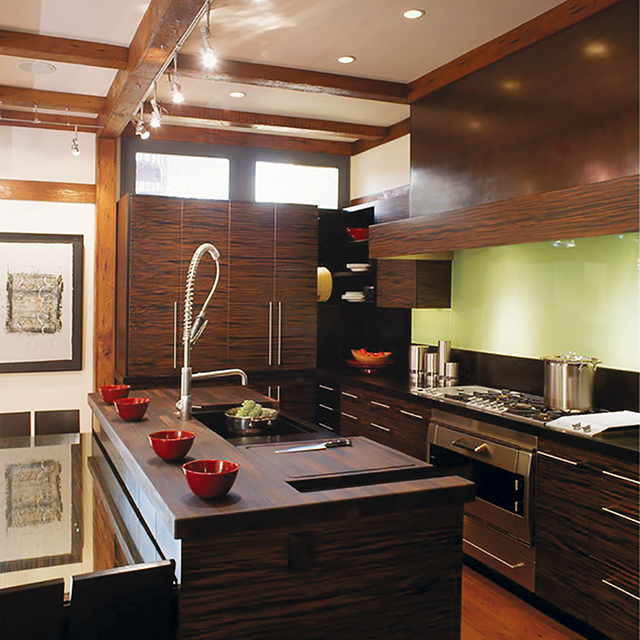
Designer Jennifer Gilmer proves that Japandi minimalism can be elegant and timeless, designing this kitchen with cabinetry crafted from Macassar Ebony, an engineered veneer.
Photos: OEO Studio
Japandi Meets Bungalow
Jennifer Gilmer, an award-winning kitchen and bath designer and principal of Jennifer Gilmer Kitchen & Bath with showrooms in Maryland and Virginia, says that she tells clients, jokingly, that she designs “Western Feng Shui” kitchens. “But I am really quite serious,” she remarks. “The more I learned about Feng Shui, the more I realized that I was unwittingly doing just that. It has become my signature style. So no matter what the design is, and they are all very different, the one thing they have in common is that they make you feel good. That’s Feng Shui.”
Japandi fans will testify to its built-in Feng Shui, so it’s no surprise that Gilmer chose modern Japanese design as the look she wanted for her own home. “This was a Sears bungalow,” she tells. “It was a far cry from the elegant minimalism of Japanese design, but my architect magically made my aspirations possible with a modern addition at the back of the house. There, I got the beautiful and functional space I had visualized for cooking, family life and entertaining.”
Knowing that the cabinetry would be the main focus of the kitchen, Gilmer sought out Premier Custom-Built Cabinetry, which has developed its Mizuki style inspired by Japanese folk houses and traditional Tansu cabinetry.
“We chose an engineered veneer crafted to look like Macassar Ebony,” relays Gilmer. “The wood grain is horizontal, and the ‘striped’ look is so striking that everything else in the kitchen was chosen to complement the cabinetry. No other element was allowed to distract from its beauty. For example, honed black granite was used for the countertops and wenge for the island wood detail. Wenge is similar to cherry, but turns dark over time. The backsplash behind the cooktop is backpainted glass, the farmhouse sink sits on black granite to protect the cabinets from water damage, and dishes are kept on floating shelves.”
She’s especially fond of the pantry, with its retractable bi-fold doors. They open to reveal a countertop, and it houses a steam oven as well as a plethora of cooking accessories. When not in use, the doors are shut so the pantry looks beautiful when entering the kitchen.
The gnarly irregularity of the unclaimed wood floors and beams contrasts with the clean, sleek cabinets, creating precisely the kind of juxtaposition that’s quintessentially Japanese. “So, yes, modern Japanese design and American Bungalow can mix well,” concludes Gilmer. “This space will never go out of style because it honored and melded two very tasteful styles that have proven the test of time.”
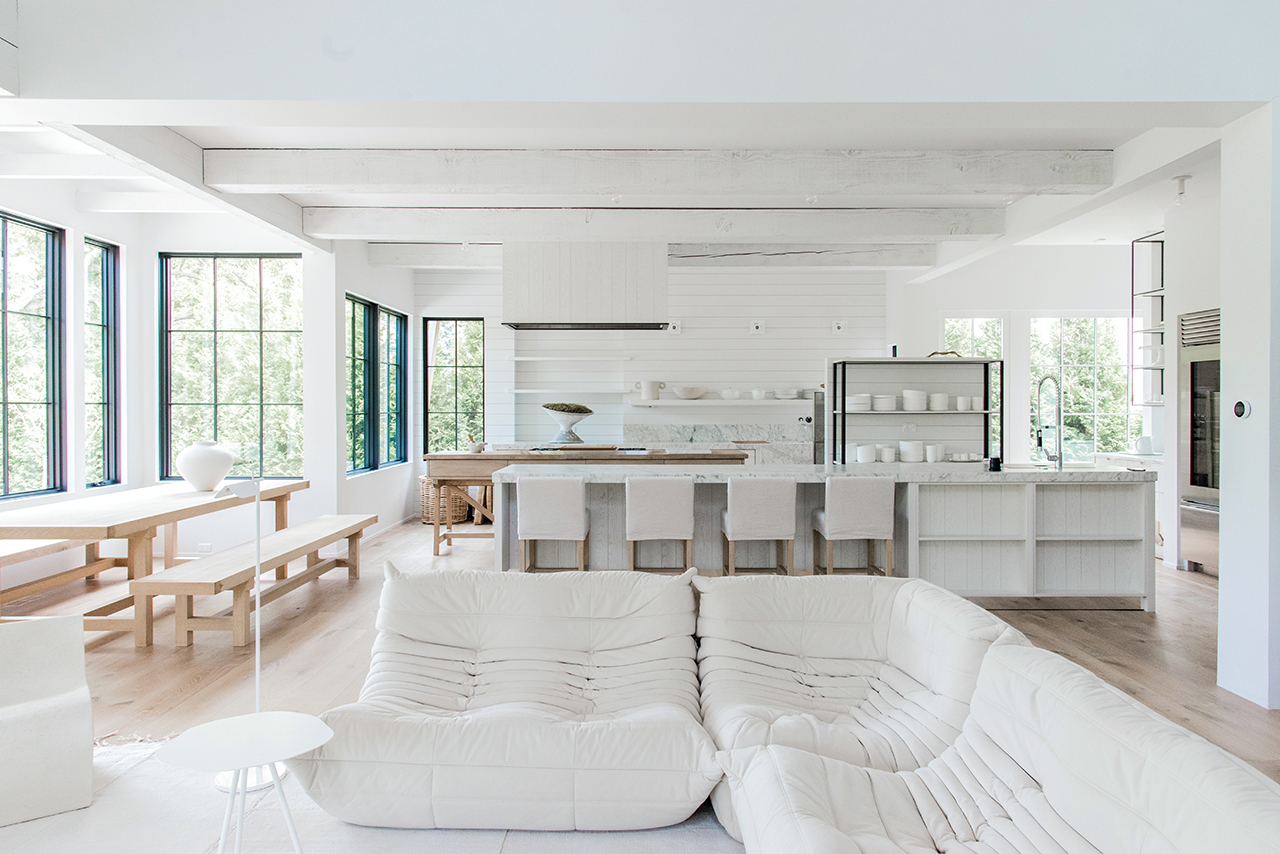
Neutral colors but strong texture contrasts of this Winnetka, IL open kitchen/family room/ dining area by Mick De Giulio reflect the design aesthetics of both Scandinavia and Japan.
Photo: Belen Aquino
Detailed Minimalism
Mick De Giulio, principal of de Giulio Kitchen Design in Chicago, IL, pays visits to near and far locales, and those influences have a way of creeping into his kitchen designs. Japanese and Scandi aesthetics may appear in a design here and there, but in typical De Giulio fashion, inspirations remain just that. From there they are carefully curated and translated into one-of-a-kind designs.
Such is the case of a kitchen he designed in Boston – a classic 19th-century Victorian with a modern addition in the back. “It was just right for a family friendly kitchen,” notes De Giulio. “It’s a contemporary, clean-lined space, but it blends seamlessly with the old part of the house, he remarks. “The design emphasizes asymmetry and horizontals, and the layout is straightforward. Materials play an important role in keeping the space serene. We used light walnut in an organic, almost natural color that we nicknamed ‘Norwegian’ for its sun-bleached, Scandinavian look.”
Of course, everything that De Giulio designs is actually not that simple. A kitchen may look minimalistic, but it’s sure to include exquisite details that don’t shout. The Boston kitchen’s cabinetry, for example, is framed in bronze and contrasts subtly with brushed Iceberg quartzite. The edges of the quartzite counter were mitered to make the slab look extra thick, and a stair-step design at one end provides room for extra seating. The quartzite is repeated on the backsplashes and wrapped the range area.
In another kitchen in Winnetka, IL, De Giulio, worked the wood, creating cabinets with seemingly unfinished, textured surfaces. The space was a riff on a style that the client called Belgian farmhouse, but it is also a look that’s beloved in Scandinavian and Japanese farmhouses. De Giulio achieved it using white oak, cross-cut against the grain. To emphasize the casual, freewheeling look of the light-filled space, he installed legs on the island and placed the cooktop on a table made of reclaimed wood. Finally, he introduced some freestanding stainless steel cabinets for a bit of an industrial vibe.
“There’s nothing sleek about this space,” comments De Giulio. “It is full of textures and juxtapositions. Nobody ever heard of Japandi when this kitchen was designed, but I think it plays into the style. It’s a strong style, especially because it is so adaptable.”
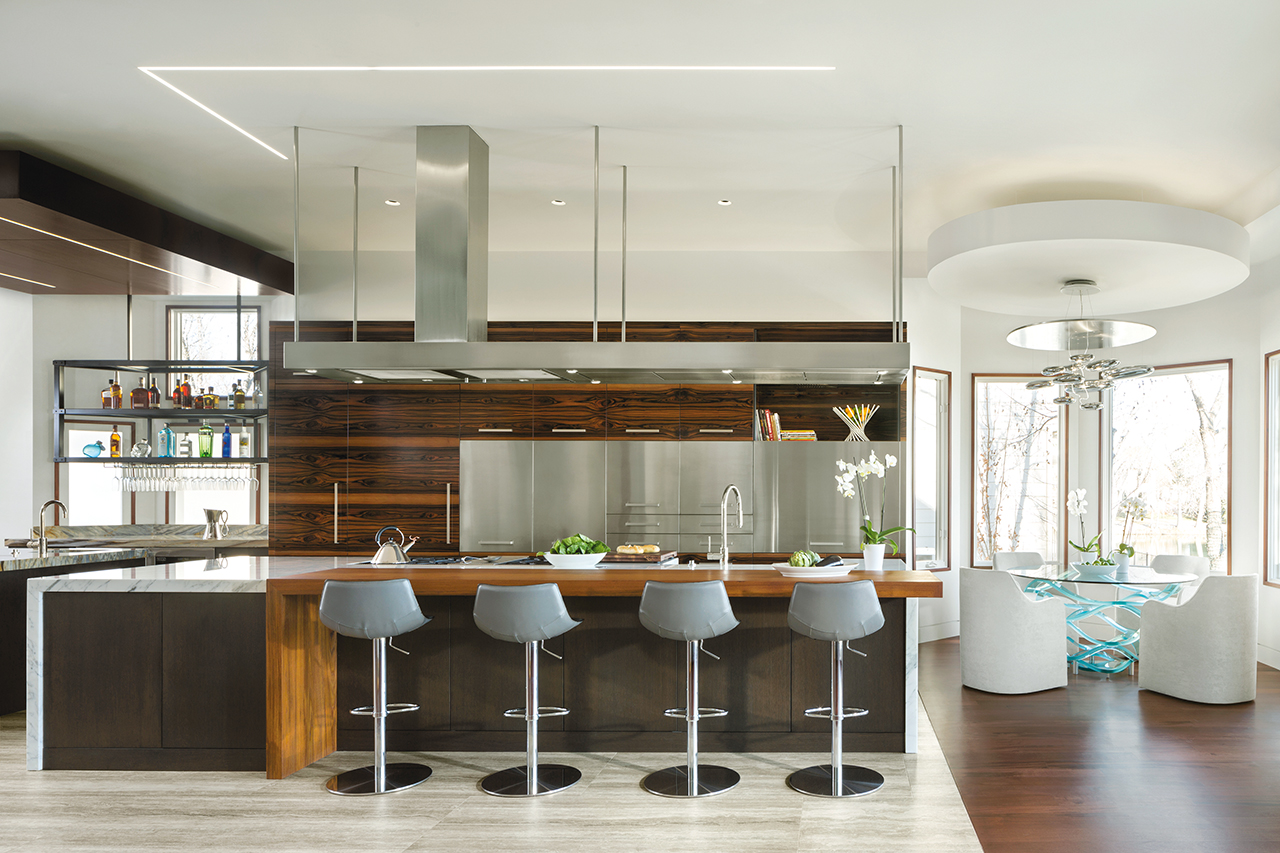
Marcus Otten calls the Royal Ebony veneer used for the cabinets in this kitchen the most beautiful he has ever seen, with unique colors and patterns that dictate that the cabinetry should be the key element.
Photos: Kimberly Gavin
Globetrotting Style
How do a couple of world travelers get a kitchen that reflects their global style, works as a canvas for treasures from many countries and yet functions for everyday life? They get together with award-winning designer Marcus Otten of Exquisite Kitchen Design in Denver, CO. Otten is known for a singular motto: “There are 10,000 different ways to do things, but only one way to do it right.”
For the world travelers, he designed a space where everything tells a story and brings up memories. The couple’s objets d’art are displayed throughout the space, including on floating shelves. The most stunning element, however, is the cabinetry featuring Royal Ebony veneer.
“It’s the most beautiful material I have ever seen,” remarks Otten. “It features unique color patterns and is very rare. There simply are no more logs. This African tree grows slowly and can only be turned into lumber when it’s 100 or so years old.”
Rift-cut oak for other cabinets and the island plus steel accents provide the layers and textures that Otten favors. Altogether, the space contains a lot of the Japandi influence: meticulous craftsmanship, beautiful wood, thoughtful contrasts and artistic accents.
Japandi’s elements are expected to continue to resonate with designers, who find its sophisticated minimalism warmed by craftsmanship and artistry endlessly adaptable. Many homeowners also understand and embrace the concepts of hygge and wabi-sabi, which Japandi fans call “yin and yang” at its best. Gilmer’s reference to it as “great Feng Shui” reflects its staying power in design. 
The post The Art of Japandi appeared first on Kitchen & Bath Design News.
Thermador Cites Student Design Winners
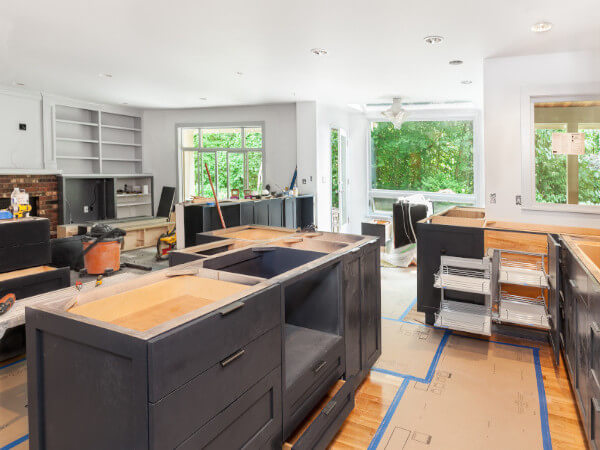
IRVINE, CA — Thermador, the Irvine, CA-based luxury home appliance brand, has announced the inaugural student recipients of the company’s “Diversity in Design Pipeline” initiative, launched this year to empower a new generation of talent from underrepresented communities.
The Thermador Diversity in Design Pipeline Initiative, created in partnership with the Interior Design Society, was designed to support students in their senior year at an accredited interior design program to aid the transition into a successful, burgeoning career. The program was informed by a survey commissioned by Thermador that found mentorship and financial support to be the greatest obstacles for students of under-represented backgrounds to become professional designers.
The winning students include Aleah Mazyck of UNC Greensboro, Kayla Martin of California State University, Raquel Rodrigues of Texas Tech University, Jonathan Martin of the University of Northern Iowa and Chrystal McLeod of Georgia Southern University.
“Thermador is honored at the opportunity to work with these talented students as part of our brand’s commitment to opening more pathways for underrepresented communities in interior design,” said Beatriz Sandoval, head of brand marketing for Thermador.
The mentorship program pairs students and mentors who will meet monthly to discuss the essential and tangible skills needed to be successful in the world of design. Students also receive $10,000 toward tuition and a student membership with IDS, Thermador said.
The post Thermador Cites Student Design Winners appeared first on Kitchen & Bath Design News.
Did you miss our previous article…
https://www.thekawaiikitchen.com/?p=616
Wellborn Cabinet Marks Alabama Factory Expansion
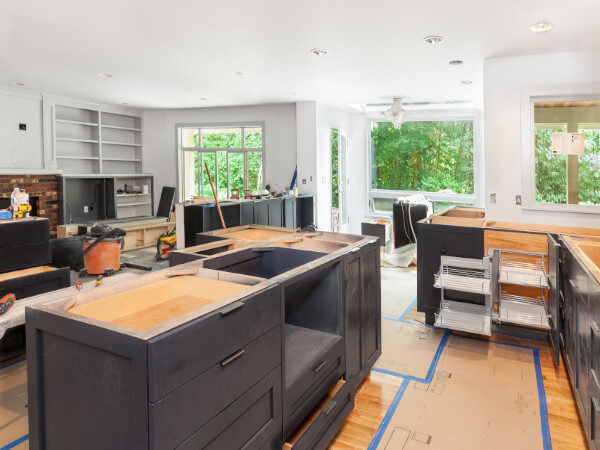
ASHLAND, AL — Wellborn Cabinet Inc. has announced the groundbreaking for a major expansion of the company’s cabinet manufacturing facility here.
The $15-million expansion will add more than 175,000 sq. ft. to the 60-year-old company’s cabinet manufacturing factory, impacting more than a dozen facets of the company’s operations, Wellborn officials said. The expansion is expected to result in the creation of more than 200 jobs, the Ashland, AL-based company added.
“With the help of our local, state and federal officials, along with our local schools, we’ve been blessed with the ability to undertake this expansion and have the opportunity to add these jobs,” said Wellborn Cabinet CEO Paul Wellborn. “We’re especially thankful for all of our dedicated employees, who have helped make all of this possible.”
The post Wellborn Cabinet Marks Alabama Factory Expansion appeared first on Kitchen & Bath Design News.
Did you miss our previous article…
https://www.thekawaiikitchen.com/?p=598
Sharp Growth Forecast for Green Building Materials

DUBLIN — The global green building materials market is expected to grow at a compound annual growth rate of more than 12% over the next four years, due largely to “a growing awareness about environmental sustainability that’s driving demand,” a leading market research firm said last month.
According to Dublin, Ireland-based Research and Markets, the global green building materials market is expected to increase from $238.9 billion in 2021 to $383.9 billion in 2025. North America was the largest region in the green building materials market in 2021, the research firm said. Asia Pacific is expected to be the fastest region in the forecast period, researchers added.
“The introduction to environment-friendly products is gaining significant popularity in the green building materials market,” research officials said. “Major participants in the green building materials industry are concentrating on launching new product lines that minimize the global warming potential (GWP) without compromising product quality.”
The green building materials market consists of sales of eco-friendly, durable structural, exterior and interior products that use less water, are easier to maintain than traditional building materials, and improve the sustainability and efficiency of a building because of a lower carbon footprint. The products are used in framing, insulation, roofing, exterior siding and interior finishing for both residential and non-residential structures.
The post Sharp Growth Forecast for Green Building Materials appeared first on Kitchen & Bath Design News.
Did you miss our previous article…
https://www.thekawaiikitchen.com/?p=595
Liebherr Announces Appointments
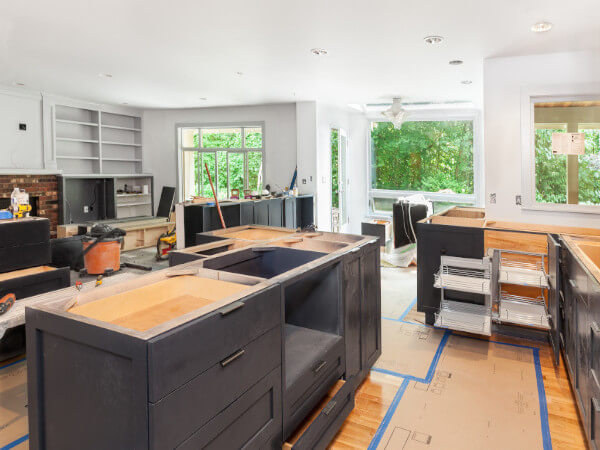
Liebherr recently added three new members to its team.Jessie Escobar was recently brought on as Liebherr’s regional sales manager, Western Territory. In his current role, he leads sales development from Alberta, Canada to Southern California and offers support to retailers and distributors, while working to increase brand awareness and Liebherr’s footprint in the North American market.Christian Lopez has joined the Liebherr team as e-commerce specialist for Liebherr Appliances, North America. In his new role, Lopez will work to build strong relationships with consumer-facing dealers, creating an efficient path for dealers to purchase Liebherr accessories online.Sarah Gambrell is Liebherr’s regional sales manager for Scientific Appliances. With over 18 years of experience in sales — specifically with medical devices, capital equipment and pharmaceuticals — she is tasked with growing the Scientific Appliances division for Liebherr and becoming the conduit for dealers and distributors.
The post Liebherr Announces Appointments appeared first on Kitchen & Bath Design News.
Did you miss our previous article…
https://www.thekawaiikitchen.com/?p=592
Loan Limits Raised for Mortgages to be Acquired by the Enterprises
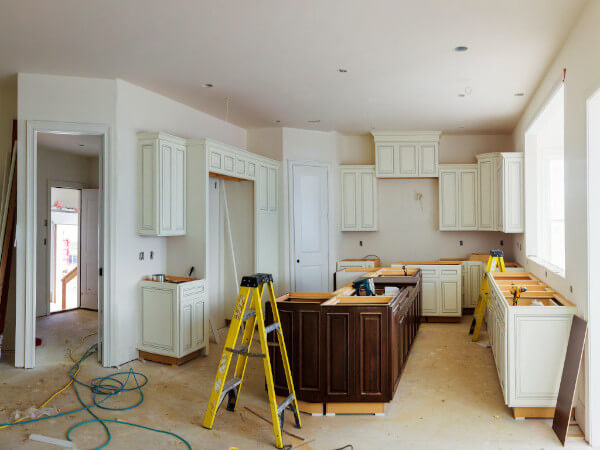
WASHINGTON, DC — The Federal Housing Finance Agency has announced an increase in conforming loan limits (CLLs) for mortgages to be acquired by Fannie Mae and Freddie Mac (the Enterprises) in 2022.
In most of the U.S., the 2022 CLL for one-unit properties will be $647,200, an increase of $98,950 from $548,250 in 2021, according to the FHFA.
The Housing and Economic Recovery Act of 2008 requires that the baseline CLL for the Enterprises be adjusted annually to reflect changes in the average U.S. home price. According to the latest FHFA House Price Index (HPI), house prices increased 18.05%, on average, between the third quarters of 2020 and 2021. Due to rising home values, the baseline CLL in 2022 in all but four U.S. counties or county equivalents will increase by the same percentage, the FHFA said.
“These increases are an important step to ensure that government-backed mortgages keep pace with the sharp rise in home prices over the past year,” said Robert Dietz, chief economist for the National Association of Home Builders. “Supply-side challenges, including building material bottlenecks and lot and labor shortages, will continue to place upward pressure on construction costs and home prices in 2022.”
For additional information, visit https://www.fhfa.gov/CLLs.
The post Loan Limits Raised for Mortgages to be Acquired by the Enterprises appeared first on Kitchen & Bath Design News.
Homeowners Seeking ‘Spa Feel’ in Bath Remodels, Study Finds
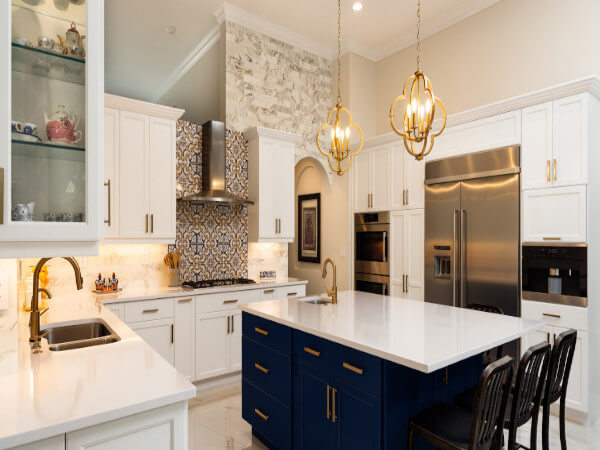
PALO ALTO, CA — U.S. homeowners are increasingly turning to their master bathroom as a safe and peaceful respite from a world that often seems chaotic and threatening, a major new survey has found.
According to the 2021 U.S. Houzz Bathroom Trends Study, whose results were released last month, two in five surveyed homeowners report using their renovated bathroom for rest and relaxation. The survey also found that cleanliness and a lack of clutter are keys to creating a “spa-like atmosphere” in the bath.
The annual online survey was fielded between June and July 2021 to nearly 3,000 U.S. Houzz users who are in the midst of, are planning, or recently completed a bathroom renovation, according to the Palo Alto, CA-based online platform for home renovation and design.
“In the midst of the chaos created by the COVID-19 pandemic, we’re seeing homeowners turn to their bathrooms for respite, creating calming sanctuaries with premium features, hygienic surfaces, and plants and other greenery,” said Marine Sargsyan, Houzz senior economist.
“Given the major changes involved, homeowners renovating their bathrooms are (also) seeking professional help at a growing rate,” Sargsyan added.
According to Houzz, modern, transitional and contemporary styles remain the leading choices for renovated bathrooms. Other features gaining popularity include dimmable lighting and greenery. The percentage of homeowners who relax in their renovated bathroom by soaking in the tub was up six points compared to last year, outpacing the share of those who unwind with long showers, Houzz said.
More than three quarters of homeowners incorporate premium features into their bathtubs and showers, the company added. Top premium features for the bath include soaking tubs, space for two and silent whirlpool baths, while premium shower upgrades include rainfall showerheads, dual showers, body sprayers and thermostatic mixers.
Additional survey findings include:
n Marble in Vogue: Marble is being adopted at a higher rate by renovating homeowners, with increased usage in shower flooring, non-shower flooring and non-shower walls.
n Colorful Vanities: While white continues to be the dominant color chosen across all bathroom features, blue and wood vanities have become more popular over the past year, bringing warmth and texture to bathrooms.
n Lighting Upgrades: Homeowners cite both insufficient lighting and no natural lighting as issues before a bathroom renovation, which may explain why more than four in five homeowners upgraded their lighting fixtures this year, Houzz said. Wall lights and recessed lights remain the top two choices in upgraded lighting. However lighted mirrors, pendant lights and chandeliers all inched up in popularity from last year.
n Toilet Technology: More than a third of homeowners who upgraded their toilets during renovations incorporated technology. Bidets remain the most popular tech feature for one in five homeowners, followed by self-cleaning, heated seats, overflow protection and built-in nightlights.
n Lighted Mirrors: Three-quarters of renovating homeowners installed mirrors in their renovated bathroom, with over half installing more than one mirror. Some upgraded mirrors have advanced features, such as LED lighting and anti-fog systems.
n Custom Medicine Cabinets: Nearly one-third of renovating homeowners install custom or semi-custom medicine cabinets, many of which include features such as hidden plugs and lighting on the inside.
The post Homeowners Seeking ‘Spa Feel’ in Bath Remodels, Study Finds appeared first on Kitchen & Bath Design News.
Did you miss our previous article…
https://www.thekawaiikitchen.com/?p=586
Ongoing Supply Chain Disruptions Termed Threat to Housing
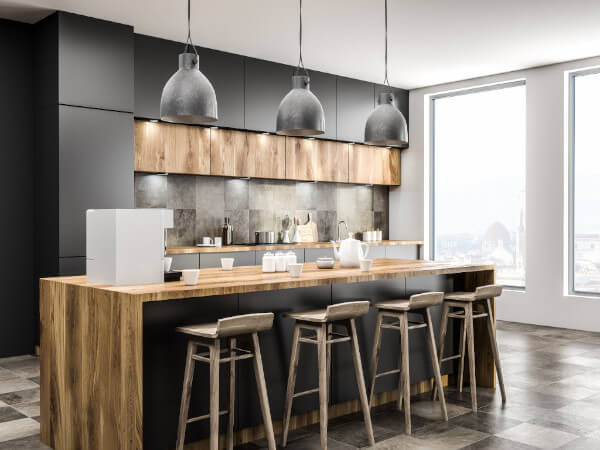
WASHINGTON, DC — Ongoing global supply-chain disruptions coupled with the prospect of higher interest rates threaten to exacerbate affordability problems for both new and existing homes in the months ahead, the National Association of Home Builders said last month.
Housing affordability, according to the latest figures released by the NAHB, held steady at its lowest level in nearly a decade, as record-high home prices offset lower mortgage rates to keep the affordability rate flat in the third quarter of 2021.
“Persistent building material supply chain bottlenecks and tariffs on Canadian lumber and Chinese steel and aluminum continue to place upward pressure on construction costs and home prices,” even in the face of continued high demand,” said Chuck Fowke, chairman of the Washington, DC-based NAHB.
Moreover, according to NAHB Chief Economist Robert Dietz, interest rates are anticipated to gradually rise in the coming months, as the Federal Reserve begins to taper its monthly bond and mortgage-backed securities purchases.
“To keep affordability problems from worsening, policymakers need to tackle supply-chain challenges that are disrupting and delaying construction projects and hurting housing affordability,” Dietz said. “Helping builders boost output will also slow the rapid rise in home prices that has occurred over the past year.”
In addition to concerns over building materials and the national supply chain, labor and building lot access are key constraints for housing supply, according to Dietz. “Lot availability is at multi-decade lows and the construction industry currently has more than 330,000 open positions,” Dietz said. “Policymakers need to focus on resolving these issues to help builders produce more housing to meet strong market demand.”
In related news:
n Low existing inventories and strong buyer demand helped push builder confidence higher for the third consecutive month even as supply-side challenges – including building material bottlenecks and lot and labor shortages – remain stubbornly persistent, the NAHB said, noting that as a result of supply-chain effects, there are 152,000 single-family units – up 43.4% from a year ago – that have been authorized for construction but are awaiting a go-ahead.
n Single-family housing production lagged in October due to supply-chain effects for materials and ongoing access issues for labor and lots. Overall housing starts decreased 0.7% to a seasonally adjusted annual rate of 1.52 million units, according to the U.S. Dept. of Housing and Urban Development and the U.S. Census Bureau.
The post Ongoing Supply Chain Disruptions Termed Threat to Housing appeared first on Kitchen & Bath Design News.
Millennials’ Impact Seen Gaining for Kitchen & Bath Designs
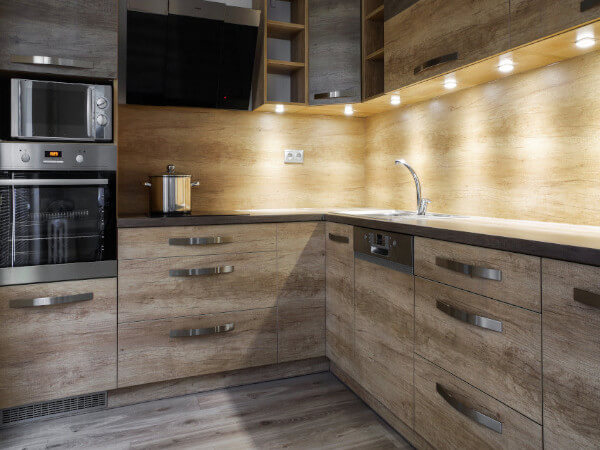
HACKETTSTOWN, NJ — Millennial clients – particularly those with children – are increasing in influence while the impact of Baby Boomer clients is gradually declining and Gen X is remaining constant, according to a 2022 Design Trends Forecast released this week by the National Kitchen & Bath Association.
The NKBA’s annual design trends forecast points to a gradual, yet palpable, shift in the primary customer base for new and remodeled kitchens and baths, after several decades in which the market was driven largely by a huge cohort of Baby Boomers (aged 57-75) and Gen Xers (aged 41-56) consumers.
While baby boom and Gen-X consumers remain the industry’s predominant buying force, the steady increase in business from Millennial clients (ages 25-40) is increasingly impacting both market share and anticipated kitchen and bath design trends, according to the NKBA, which said Millennials’ impact has “a high probability of increasing in the future.”
“Those working with Millennials see slightly less-expensive projects, but that’s likely driven by Millennials’ lower disposable income during their current life stage,” said the NKBA, whose 2022 Design Trends Forecast was based on a survey of approximately 650 designers, dealers, and other design professionals. The survey’s aim was to identify styles, features and materials that are expected to be more popular in the next several years; to identify the products that have the most dramatic impact on today’s kitchens and bathrooms; to assess if there are notable variations in designer client base profiles; and to predict if client base profiles are predictors of perceived design trends.
Among the overarching themes emerging from the NKBA’s 2022 survey is that kitchen clients generally want flex space for work, touchless fixtures, easy-to-clean surfaces, outdoor living areas, LED lighting and recycling storage. There is also a concerted desire for mobile-friendly spaces, healthy cooking, app-controlled appliances and voice-activated lighting, the NKBA said.
In the bathroom, consumers want a large shower, and are likely to remove tubs in order to allocate more space or access to storage/dressing areas, the NKBA said. There is also a pronounced need for energy and water efficiency, connected products such as water temperature controls, entertainment and communication, the association added.
In general, new kitchen and bathroom design is emerging from nature-inspired themes, the NKBA reported. “Organic, natural styles are prominent in both kitchens and bathrooms, especially among Millennials, (and) increased natural light with large, high-performance windows and doors for outdoor access will be prominent,” the NKBA said.
“Homeowners have a desire for spaces that can multi-function,” the NKBA observed, pointing to a growing trend toward large islands for food prep that also function as dining tables, homework and work from home; flexible space for home office activities; pantries that include space for storage and a working area for small appliances; and workstation sinks with built-in features (drying racks, cutting boards, etc.) In addition, bathrooms that connect to dressing areas and/or laundry facilities, and vanities and medicine cabinets with outlets are also experiencing increased popularity.
When designing new spaces, homeowners are generally thinking about the following:
n Cleanliness: easy-to-clean surfaces and countertops that are sanitary and non-porous. The current strong demand for quartz is expected to continue, as is the popularity of larger-format tile or slabs with less grout, and touchless faucets.
n Sustainable design: 100% LED lighting; a dedicated recycling area; low-E windows and doors; Energy star/efficient products; EPA WaterSense fixtures; VOC-free paint; products with recycled materials, and radiant flooring.
n Universal design: spaces that will allow for aging in place; curb-less showers; fewer free-standing tubs, grab bars, seats in showers and hand-held showerheads.
Although homeowners are excited about integrated technology, it is not being utilized in most projects. Specifically, only 30% and 21% of kitchen and bath projects, respectively, include integrated technology features, the NKBA reported.
“Designers have new ways to interact with their clients, especially Millennials,” the NKBA said. “Future design projects will include a mix of in-person and virtual meetings. In-person meetings both in designer’s offices and at the client’s home will be most prominent.
“Designers will (also) take advantage of virtual channels with video calls and video meetings with clients,” NKBA researchers added. “Millennials are more open to virtual meetings while Boomers are looking for regular onsite meetings at their home.”
The post Millennials’ Impact Seen Gaining for Kitchen & Bath Designs appeared first on Kitchen & Bath Design News.
Did you miss our previous article…
https://www.thekawaiikitchen.com/?p=580
Ceramics of Italy Tile Competition Open for Entries

NEW YORK — Confindustria Ceramica (the Italian Association of Ceramics) and the Italian Trade Agency have announced that the 2022 Ceramics of Italy Tile Competition is open for entries.
The annual awards program celebrates the exceptional work of top North American architects, designers, and students who use Italian ceramic and porcelain tile in their projects “to create innovative solutions that demonstrate an understanding of the material’s practical, aesthetic, and sustainable benefits,” competition sponsors said.
An international jury of design experts will select winners and honorable mentions in four built project categories, including new construction and residential, as well as a winner in the student category. Architects and designers based in the U.S. or Canada and students currently enrolled in a North American college or university are invited to submit their work through January 7, 2022.
Winners and honorable mentions will be notified in February and announced during the next edition of Coverings, the largest international tile and stone exhibition in North America, scheduled to take place in Las Vegas April 5-8, 2022. Winners will be invited to attend the show and present their projects in front of an audience of design and trade media, manufacturers, and tile industry professionals, sponsors said, In addition to a cash prize of $1,500, the four built project category winners will receive a five-day CEU trip to attend Cersaie, the world’s largest exhibition of ceramic tile and bathroom furnishings, set for Sept. 26-30, 2022 in Bologna, Italy.
Competition guidelines, submission forms and additional information can be found on the Ceramics of Italy Tile Competition website, www.tilecompetition.com.
The post Ceramics of Italy Tile Competition Open for Entries appeared first on Kitchen & Bath Design News.
Did you miss our previous article…
https://www.thekawaiikitchen.com/?p=577